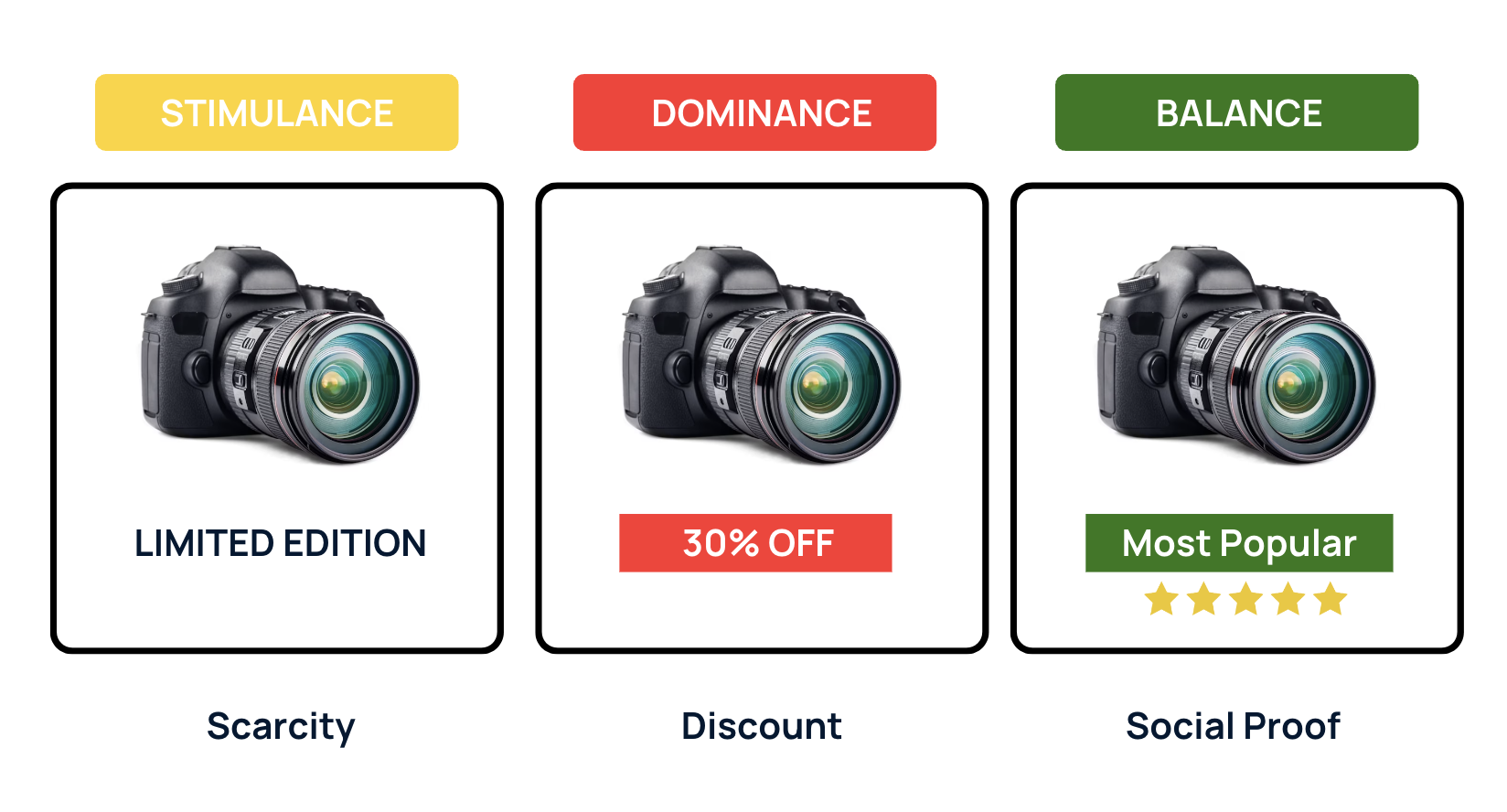Introduction
Poor consumer knowledge is the main reason why many brands struggle to meet quarter’s objectives and lose potential clients along the way.
That’s because they fail to connect with their audience at a deep level.
This is the primary cause of poor marketing performance, yet many fail to spot consumers' true motivators or do anything about it.
One thing is to know the problems that a person is experiencing, another is to actually know how they feel when facing those problems. It’s way different.
In such an evolving world, traditional communication is not working very well anymore.
Most brands and agencies often know their target consumer segments age, sex, and geolocation, problems and behaviour.
Still, they are missing the reason why they behave the way they do.
Some are now focusing on measurables and experimentation, but they are still far away from uncovering what actually motives their customers to behave the way they do.
Still, they don’t know what motives their target audience to take an action and make a purchase at that particular moment.
But what if there was a way to get to know this?
What if you could identify what resonates with and motivates your target customers on an emotional level, and design your marketing experiences to convert more around that data?
In this article, we are going to walk you through how emotions influence your consumers’ purchase decision-making process and how to uses these insights to create more meaningful marketing experiences.
How people make decisions
The very first thing to do is to take a closer look at the most recent researches on how people actually make decisions.
Scientists used to think that our decisions were driven by reason, while emotions only interrupted this cognitive process.
But, in the 1990s, new studies and researches in psychology, anthropology, and neurology were showing proofs contrary to this assumption.
By then, scientists were realising that emotion and reason are integrated systems in the human brain and that emotions can induce a subject to take any action before they are even able to cognitively process it.
This evidence got supported by more recent studies and made even more evident that emotions are the main influence in human decision-making process.
And even if now this is clear and proved in the scientific world, still many brands and agencies are not capitalising on this insight continuing to base their communication and strategies on assumptions.
Ok, but what does this actually mean to you?
Let’s think about this scenario:
Imagine that you have a second house at the beach where you go a couple of times a month if you can. It means a lot to you because you live in the city and the beach house is the perfect place where you can disconnect from the chaos of the city. You made your second property the best place for you to relax and enjoy.
And of course, the last thing you want is for someone to enter the area, disturb you, or even ruin what you have done so far.
You then decide to hang a sign on the front gate to keep unwelcome guests out, and you are now deciding between the two options below:

Which option would you choose?
Which one do you think will be more effective?
I’ll say that you are probably thinking of the red sign with the Video Surveillance – as most people do.
But what actually makes this option more effective than the other?
Why are the colour red and the camera so effective?
Going back to the two options above, the first sign is basically just informational communication. It says “Caution – Keep Out” and relies on the good norm of society to not trespass someone else’s property.
The second option instead, relies on more emotional communication. Why?
For many people, the threat of being recorded on camera and being prosecuted is something that they are averse to face. Also, the colour red is more vigorous to trigger majorly this fear-averse emotional response than the yellow in the first option.
Communication (the sign) stimulates an emotion (fear), which leads to an action, or, in this case, a lack of it (not trespassing).
Emotions and Purchase Decision Making
Great, so far, so good.
But how does all of this affect your customers’ purchase decision-making?
Let’s try to think about this:
Imagine that you need to buy a new laptop. The one you have is basically new and has already had a few problems during this time. The customers’ service doesn’t help very much and says it’s a model issue as they keep receiving complaints from others owning the same one. You know that it’s been going on for a while and you just need to buy a new one.
However, this time you don’t want to run into the same issue, so you start researching different models and brands. You check the reviews and ask for recommendations.
And after careful consultation, you make your decision.

Now, is this example referring to an emotional or a rational decision-making process?
Even though it was an extended decision-making process, which might seem more rational, here again, you are actually mainly moved by your emotions.
Your choice is directly influenced by your previous experience and the fear to encounter another “crappy” laptop.
Your aversion to facing a similar situation again leads you, not only to decide the brand and model to buy but also to actually spend so much time comparing different options.
Your target consumers are influenced by their emotions in the same way.
Rational vs Emotional thinking
Every person has two ways to react to stimulation: Rational or Emotional.
The rational is the conscious one, while the emotional happens at an unconscious level.
Why are we saying this?
Just to make you see how effectively the emotional process is predominant over the rational.
The human brain and body, as efficient machines as they are, work in energy-save mode. It basically goes like this “Why should I consume much energy when there is a much effortless way I can select?”
So it happens that the rational process requires a large amount of energy to be activated, on the contrary to the emotional one that requires just a minimum amount.
This means that everyone’s brain processes almost all signals from your environment unconsciously, through unconscious (emotional) processes.
This is why we are all much better respondents to Emotional Communication.
The Limbic System
The limbic system is the part of the brain that controls the Emotional Process.
We don’t see things as they are, we see them as we are. – Anais Nin, Author.
When a customer decides to purchase from you, they have often decided your products or services are right for them at that specific moment, even before they were consciously aware of it.
It’s up to you to create in your target audience that feeling of “yes, this is what I was looking for”, and to provide them the benefits they need to justify their decision after they purchase.
Marketing and Neuroscience meet
at Amazon
Download now our exclusive strategy whitepaper

Marketing and Neuroscience meet at Amazon

Download now our exclusive strategy whitepaper
How to Create Meaningful Marketing Experiences for Your Customers
Now, the issue most brands and agencies have at this point is that it is very difficult to:
- Identify what their target consumers' core emotional drivers are,
- Showcase these findings as a report and dataset, and
- Implement those motivators into meaningful marketing experiences
At first, you need to understand the three different emotional components within the emotional system and how these influence consumers’ decision-making – like our marketing consultant agency does for each one of our clients.
- The Dominance System, which is motivated by power and status, and it’s averse to rage and powerlessness.
- The Stimulance System, which is motivated by new things and adventures, and it’s averse to boredom.
- The Balance System, which is motivated by security and stability, and it’s averse to risks.
All of us have the three emotional components in different proportions, as we are all different and with different past experiences. And depending on the situation we face their proportion changes within the same individual.
So, there are situations where the Dominance System is the most receptive and others where the most receptive is the Balance one.
Great, so now how is possible to actually understand and stimulate these emotional systems?
Let’s introduce the Limbic Map
The Limbic Map is one of the best approaches for emotional understanding developed through years of scientific studies and researches.
It got developed by the German research group, Gruppe Nymphenburg, based on the latest findings in psychology, neuroanatomy, neurochemistry, and other scientific disciplines.
The Limbic Map shows the different emotional systems present in your client’s head, and how they interact and influence their decision-making process through values and motives.

Most people are dominated by one of the three systems, depending on the situation they are facing and the brand they are interacting with.
The Limbic model allows to categorise a target customer segment by precise and detailed psychographic profile rather than just demographics or geographics.
Understanding a customer audience by Limbic type means that you can design marketing experiences that effectively resonate with this audience on an emotional level.
Here is an example of this based on three limbic systems. Most of the brands and agencies we speak with have the belief that discounts are the best strategy to win clients.
But what if a discount is not the best motivator for your target consumers?

Same product and brand - different emotional impact.
A person dominated by the Stimulance System is less motivated by a discount than by something new, limited edition, or rare. In this case, Scarcity is a better tactic to engage the Stimulance audience.
A person dominated by the Balance System, on the other hand, needs to know that they are making the right choice. This person is highly risk-averse and sensitive to consensus. Rather than a discount, putting your best-reviewed products forward to showcase Social Proof would be a better strategy.
How AeMotion manage to uncover hidden Emotional Motivators
Our tech-enabled process relies on the most complete neuroscientific approaches.
This allows us to pinpoint different emotional motivators within the same audience and how they switch depending on the stage of the consumer's journey.
We rely on a proven process with multiple data entry points to guarantee a complete validation of the insights and elimination of subjective interpretation of data.
Our process gathers online and offline data to analyse consumers' behaviours from different angles and validate our output.
You can learn more about this in Our Approach page.
Feel free to discuss further with us here.

